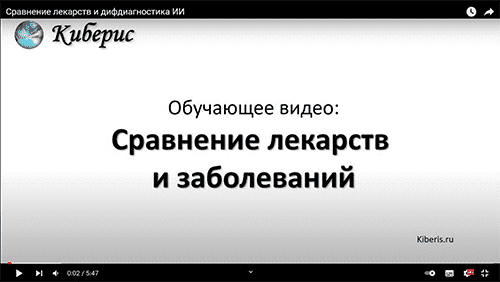Distinctive symptoms
Register , to see more distinctive signs of diseases and studies100% —
Register , to see more distinctive signs of diseases and studies— 100%
itching from water
87%
—
delayed speech development —
89%
likes sweets
81%
—
paralysis —
86%
increased sensitivity to odors
71%
—
children's speech —
80%
nail fungus
70%
—
cerebral palsy —
70%
chronic condition
67%
—
delay of mental development —
69%
worse lying down
65%
—
consequences of head injury —
69%
outbursts of anger
63%
—
big head —
58%
guilt
63%
—
shaky gait —
51%
lazy
62%
—
bends back —
51%
dry skin
56%
—
impaired arterial function —
50%
aggressive
53%
—
angiopathy —
48%
neurinoma
53%
—
brain damage —
48%
impaired coordination
54%
20%
stubbornness —
47%
oncology in the anamnesis
24%
—
standing stool —
47%
chanted speech
24%
—
impulsiveness —
47%
numbness of the hands
23%
—
up circulatory disorders —
47%
spinal cord tumors
23%
—
mental retardation —
46%
tetraparesis
23%
—
twitching of the hands —
43%
paresis of the hand
22%
—
conflicts avoids —
42%
tumors of peripheral nerves
22%
—
nervous excitability —
42%
paresis of legs
21%
—
convulsive syndrome in children —
42%
cancer in the anamnesis
19%
—
organic brain damage —
41%
hearing impaired
18%
—
cerebral circulation disorder —
41%
sensations in the hands
18%
—
speech slurred —
41%
radiation therapy
17%
—
cerebrovascular disease unspecified —
41%
radiation damage
16%
—
internal trembling —
41%
cancer
15%
—
convulsions —
41%
neurinoma of the auditory nerve
13%
—
hyperactive —
40%
benign neoplasms
23%
8%
atherosclerosis of blood vessels —
39%
masked face (hypomimia)
24%
12%
fearfulness —
38%
brain tumor
24%
12%
nervousness —
38%
dizziness
17%
8%
muscle hypertonus —
36%
nose good
62%
53%
speech absence —
36%
vomiting
15%
11%
insecurity feeling —
35%
occlusive hydrocephalus —
34%
hypoxia —
34%
lowered —
33%
decreased concentration of attention —
33%
presses —
33%
epilepsy in a dream —
31%
autism —
30%
tension in the head —
30%
emotional —
30%
in the genus mental illness —
30%
hydrocephalus —
30%
epilepsy —
29%
multiple sclerosis —
29%
consequences of infection —
29%
illusions —
29%
dysarthria —
29%
hydrocephalus in children —
29%
delay in physical development —
28%
muscle weakness —
28%
closes —
28%
facial swelling —
28%
worse when walking —
27%
ventriculitis —
25%
epilepsy attacks —
25%
noise in the head —
25%
head injury —
23%
curvature of the spine —
23%
impressionability —
23%
traumatic brain injury —
22%
dandy-walker syndrome —
22%
loss of balance —
22%
leukoencephalitis —
21%
trauma —
20%
hemorrhage in the ventricles of the brain —
20%
disorders of cerebrospinal circulation —
19%
consequences of injuries —
19%
diabetic macroangiopathy —
19%
grandmother diabetes mellitus —
19%
arachnoiditis —
19%
swelling of the brain —
19%
inflammation —
18%
head injury in anamnesis —
18%
hypertension —
18%
hematoma —
18%
vestibular ataxia —
18%
ventriculomegaly —
17%
germinoma of the brain —
17%
subdural hematoma —
17%
colloidal cyst of the iii ventricle —
17%
changing handwriting —
17%
serous meningitis —
17%
angioplasty —
17%
impaired venous function —
17%
headaches —
17%
worse during day —
16%
craniovertebral anomalies —
16%
resorption —
16%
basilar impression —
16%
puts pressure on the eyes —
16%
tendon contracture —
16%
fontanelle —
16%
movement of eyeballs is limited —
16%
pulsation in the head —
15%
headache behind the eyes —
15%
asymmetry —
15%
freezing when walking —
15%
overflow of the head —
15%
ganglioneuroma —
15%
tremor —
15%
large child —
15%
pain in the eyes —
15%
macrography —
15%
changing the size of body parts —
14%
hemorrhagic stroke —
14%
lop - eared —
14%
tinnitus —
14%
tremor of the chin —
14%
cerebellar ataxia —
14%
headache in the crown —
14%
pain is felt in the orbit —
14%
open fontanel —
14%
chiari anomaly —
14%
shuffling gait —
14%
astrocytoma —
13%
dizziness when walking —
13%
weakness in the extremities —
13%
tremor when moving —
13%
malabsorption —
13%
inflammation of the brain —
13%
pain in the veins —
13%
congenital toxoplasmosis —
13%
congenital cytomegaly —
13%
neurological disorders —
13%
propulsion —
13%
headache with nausea —
13%
pulsation in the temples —
13%
nausea during a headache —
13%
volitional disorders —
12%
flaccid paralysis syndrome —
12%
pulsates —
12%
congenital syphilis —
12%
scotoma —
12%
rupture duodenal dysfunction —
12%
soft tissue hematoma —
12%
true dizziness —
12%
chronic somatoform pain disorder —
12%
nausea with increased pressure —
12%
enophthalmos —
12%
enteropathy —
12%
intestinal insufficiency syndrome —
12%
congenital rubella —
12%
grandmother hypertension —
12%
headache frontal —
12%
urinary incontinence when walking —
12%
blurred vision —
12%
spastic paralysis —
12%
attachment to parents —
12%
weak endurance —
12%
headache hypertension —
11%
narrowing of the fields of vision —
11%
chronic headaches —
11%
fussy child —
11%
slowness of movement —
11%
weakness of the ligaments —
11%
surgical infections —
11%
weakness after illness —
11%
up strong —
11%
bouts of nausea —
11%
euphoria —
11%
ringing in the head —
11%
brain abscess —
11%
soft tissue abscess —
11%

